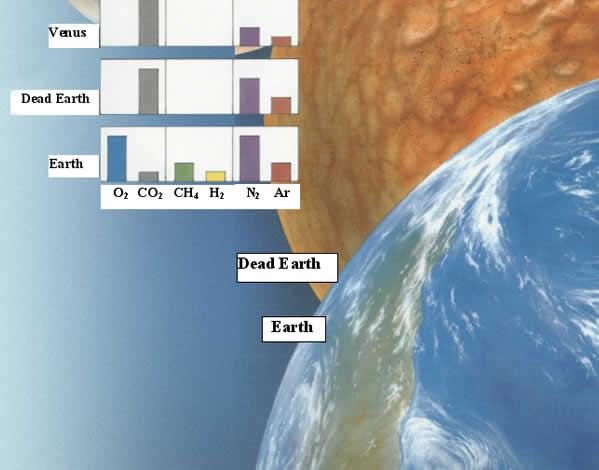|
Recognizing a living planet
Imagine yourself aboard a space ship beyond the
Solar System but still able to see its planets. The ship has a wide-range
spectrometer, with which you can discover the gaseous composition
of each planet’s atmosphere in turn.
The bar charts illustrate the read-out of the
spectrometer for three of the planets: Mars, Venus, and (lowest
set) Earth. The ship’s on-board computer has also calculated
the likely read-out for Earth, were life absent. For convenience,
the gases are displayed according to their chemical behaviour, in
three separate classes: oxidizing (oxygen and carbon dioxide), reducing
methane and hydrogen), and inert (nitrogen and argon).
The information read-out provides conclusive
evidence of life on Earth, and equally conclusive evidence of its
absence on Mars and Venus. On Earth, the atmosphere is in a state
of great chemical disequilibrium, with reducing and oxidizing gases
both present in a highly reactive mixture. Mars and Venus, by contrast,
have atmospheres close to the equilibrium state, with oxidizing
and inert gases only. In fact, no other planet in the Solar System
has oxidizing and reducing gases mixed as on Earth. Nor would the
Earth itself if life were absent. Instead it would, as the read-outs
show, have an atmosphere with a composition midway between those
of Mars and Venus, close to chemical equilibrium, and dominated
by the exhaust gas carbon dioxide.
|

